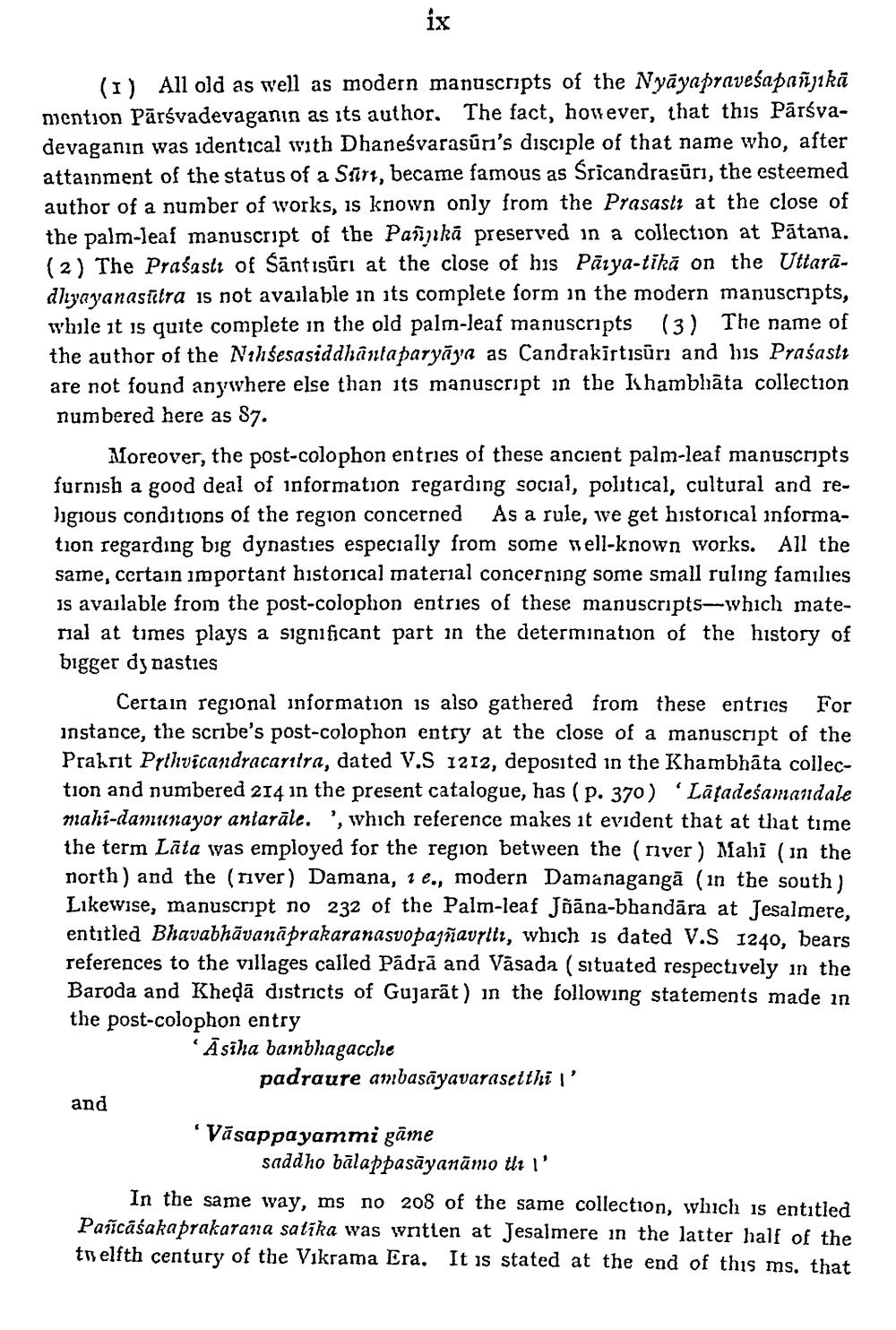________________
(1) All old as well as modern manuscripts of the Nyayapraveśapañjikā mention Parsvadevaganın as its author. The fact, however, that this Pārsvadevaganin was identical with Dhanesvarasun's disciple of that name who, after attainment of the status of a Sir, became famous as Śricandrasuri, the esteemed author of a number of works, is known only from the Prasasti at the close of the palm-leaf manuscript of the Panika preserved in a collection at Patana. (2) The Prasasti of Säntisuri at the close of his Pārya-tika on the Uttaradhyayanastira is not available in its complete form in the modern manuscripts, while it is quite complete in the old palm-leaf manuscripts (3) The name of the author of the Nihsesasiddhantaparyaya as Candrakirtisūri and his Prasasti are not found anywhere else than its manuscript in the Khambhata collection numbered here as $7.
ix
Moreover, the post-colophon entries of these ancient palm-leaf manuscripts furnish a good deal of information regarding social, political, cultural and religious conditions of the region concerned As a rule, we get historical information regarding big dynasties especially from some well-known works. All the same, certain important historical material concerning some small ruling families is available from the post-colophon entries of these manuscripts-which material at times plays a significant part in the determination of the history of bigger dynasties
Certain regional information is also gathered from these entries For instance, the scribe's post-colophon entry at the close of a manuscript of the Prakrit Prthvicandracaritra, dated V.S 1212, deposited in the Khambhata collection and numbered 214 in the present catalogue, has (p. 370) Latadeśamandale mahi-damunayor antarale. ', which reference makes it evident that at that time the term Lata was employed for the region between the (river) Mahi (in the north) and the (river) Damana, 1 e., modern Damanaganga (in the south) Likewise, manuscript no 232 of the Palm-leaf Jñāna-bhandāra at Jesalmere, entitled Bhavabhāvanāprakaranasvopajñavṛlt, which is dated V.S 1240, bears references to the villages called Pädra and Vasada (situated respectively in the Baroda and Kheda districts of Gujarat) in the following statements made in the post-colophon entry
and
'Asiha bambhagacche
padraure ambasayavarasetthi\'
'Vasappayammi game
saddho balappasāyanāmo thi l'
In the same way, ms no 208 of the same collection, which is entitled Pañcāśakaprakarana satika was written at Jesalmere in the latter half of the twelfth century of the Vikrama Era. It is stated at the end of this ms. that




